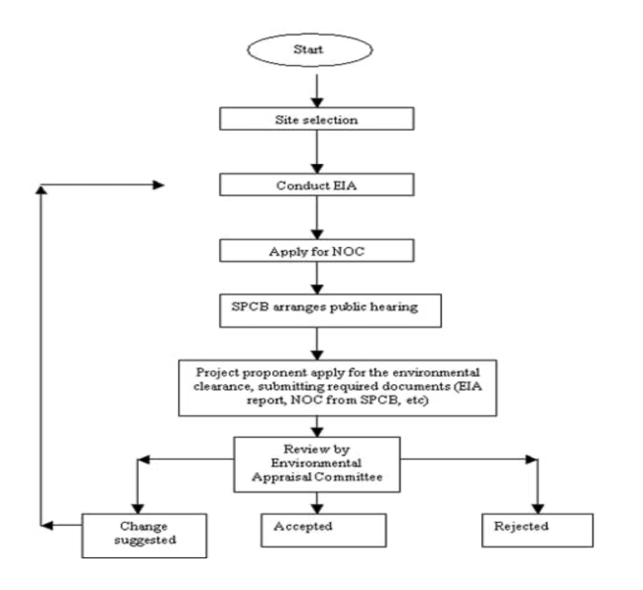Thursday, 26th January 2023
Food Subsidies can help India Achieve 2030 goals
Exam View: Subsidies in India, Food Subsidies in India, National Food Security Act, PM Garib Kalyan Anna Yojana
In News: Recently, merger of the PMGKAY and NFSA and providing 5 kg grain free of cost is another step towards long-term sustainability, presuming that NFSA will continue till 2030 to achieve SDGs.
In this article editor writes about the food subsidies and achievement of sustainable development goals (Zero Hunger and Poverty) by 2030. Recent, extension of free food grain till the end of 2023 under the National Food Security Act 2013 (NFSA) is a bold step to achieve these two key SDG goals.
Government launched Rainbow revolutions, to promote resource development and environmental sustainability. According to the United Nations multidimensional poverty data India has been able to achieve household food security and reduce poverty to 16.4%.
Due to economic inequality, poverty, low affordability of food, and lack of sanitation and clean drinking water India still have 40% below five years children malnourished.
As per the 10th Agriculture census smallholders and marginal farmers plays a vital role not only for rural economy but also for alleviating the current problems of hunger and poverty in the country.
Government Schemes to Reduce Hunger and Poverty:
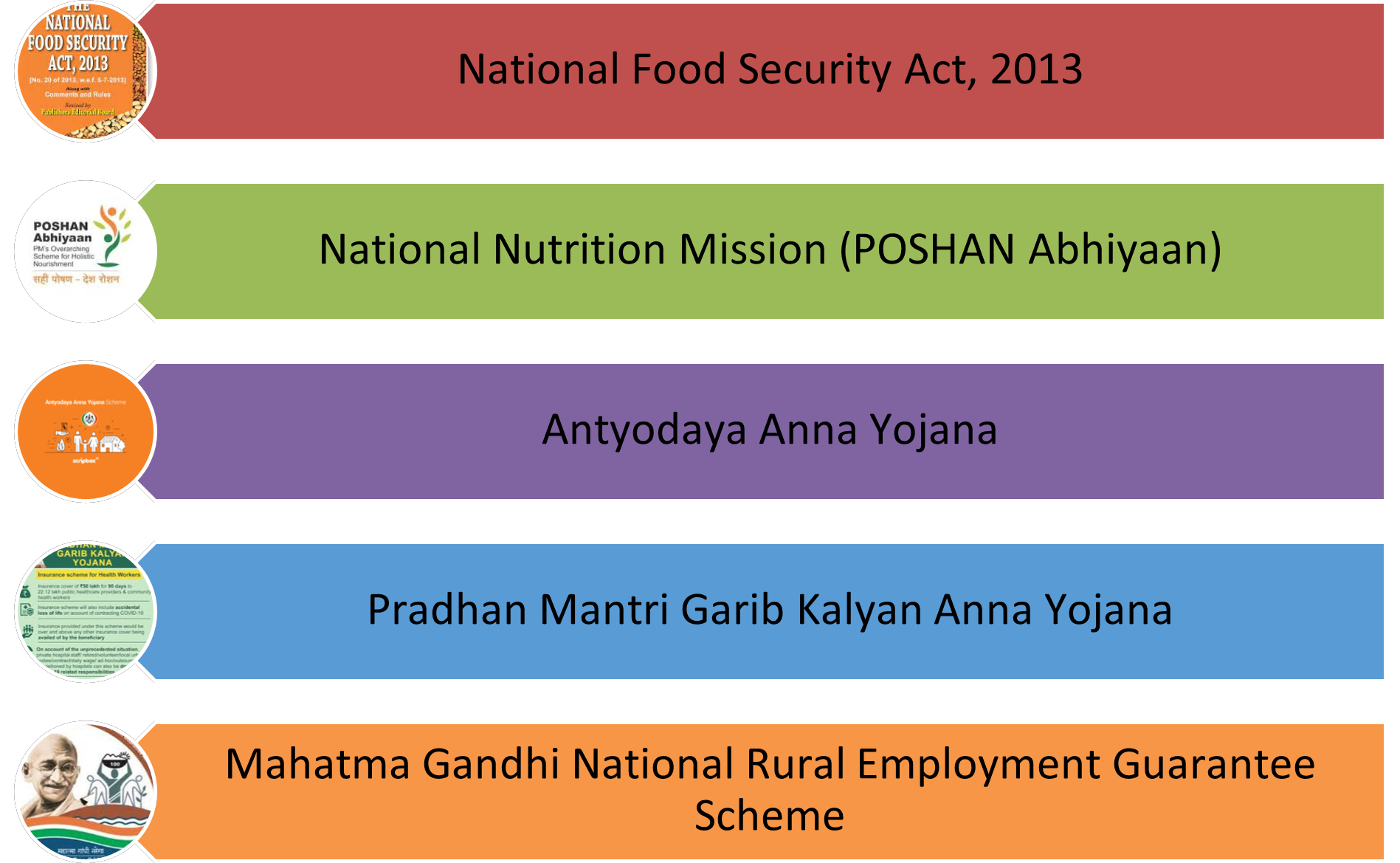
For achievement of SDG goals India needs a well-designed strategy with a well-monitored implementation plan that must include:
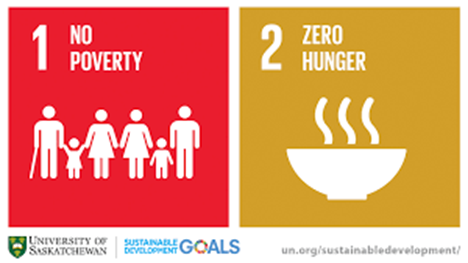
- Promotion of nutrient-rich high-yielding varieties and hybrids;
- Adoption of GM food crops;
- Crop diversification and conservation agriculture for sustainable intensification;
- Promotion of secondary and specialty agriculture, and using local food systems ecoregion-wise,
- Emphasis on farming systems around crops, horticulture, livestock, fishery, and agroforestry.
- Enabling policy environment and institutional infrastructure for improving the sustainable development index (SDI).
For achieving the SDGs for better food, nutrition, and environmental security it is important to revisit and strengthen the ongoing national programs aiming to ensure rural credit, health insurance, crop and livestock insurance, housing for the poor, improved and efficient irrigation/micro-irrigation systems, the construction of village godowns, youth skill development and self-employment, need-based fertilizer use based on soil test analysis, and linking farmers to markets.
https://www.hindustantimes.com/opinion/food-subsidies-can-help-india-achieve-2030-goals-101674494969437.html
Yellow Band Disease - Edukemy Current Affairs
Why in news? A rapidly spreading disease, commonly known as yellow band disease, is killing coral over vast stretches of the sea floor in the beautiful Samsae San Island in eastern Thailand.
About:
- Yellow-band disease is a coral disease that attacks colonies of coral at a time when coral is already under stress from pollution, overfishing, and climate change.
- It is a bacterial disease which disturbs symbiotic relations of corals causing them to die.
- Disease that spreads over coral, causing discoloured bands of pale-yellow or white lesions along the surface of an infected coral colony.
- There is no known cure for the disease and is non reversible unlike coral bleaching.

https://www.thehindu.com/sci-tech/energy-and-environment/watch-why-are-corals-in-thailand-getting-destroyed/article66396891.ece
Mahabali Frog - Edukemy Current Affairs
Why in news? Mahabali Frog, which buries itself all through the year and surfaces only one day to lay eggs, is waiting to be elevated as the State Frog of Kerala.
About:
- The Mahabali frog or purple frog (Nasikabatrachus sahyadrensis) is one of the rare frog species of the Western Ghats. It is named after the mythological king Mahabali.
- It is dark purple to greyish in colour.
- It is also called pignose frog. It is as old as the dinosaurs.
- Its head is very small in proportion to the body.
- It is listed as endangered in the red list of the International Union for Conservation of Nature (IUCN).

https://www.thehindu.com/news/cities/Kochi/mahabali-frog-waiting-for-official-recognition/article66398141.ece
Swami Sahajanad Saraswati - Edukemy Current Affairs
Why in news? Union home minister to attend birth anniversary function of peasant leader Swami Sahajanand Saraswati on February 22.
About:
- Swami Sahajanand Saraswati was an ascetic, a nationalist and a peasant leader of India.
- Although born in present-day UP, his social and political activities focussed mostly on Bihar in the initial days, and gradually spread to the rest of India.
- The Bihar Provincial Kisan Sabha (BPKS) was founded by Saraswati in 1929 to address peasants’ complaints about zamindari attacks on their occupancy rights and served as the foundation for the farmers’ movements in India.
- The All-India Kisan Sabha (AIKS) was established at the Lucknow session of the Indian National Congress in April 1936, with Saraswati chosen as its first President.
- Subhash Chandra Bose and the All India Forward Bloc decided to observe April 28 as All-India Swami Sahajanand Day in protest of his arrest by the British Raj during the Quit India Movement.
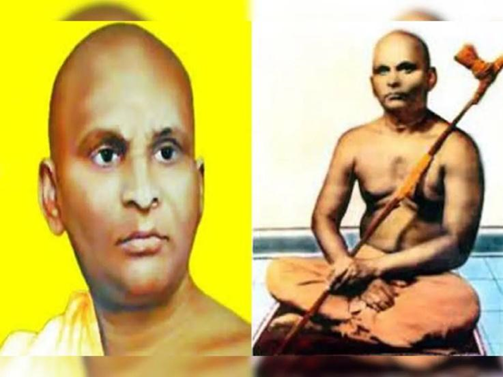
https://timesofindia.indiatimes.com/city/patna/amit-shah-to-attend-birth-anniversary-function-of-peasant-leader-swami-sahajanand-saraswati-in-bihar-on-february-22/articleshow/97216603.cms
Additional Tier 1 Bonds (AT 1 bonds)
Why in news? Recently, Yes Bank said it will move the Supreme Court against the order of the Bombay High Court to write off the additional tier-I bonds of up to Rs 8,300 crore.
About:
- AT1 bonds, also called perpetual bonds, carry no maturity date but have a call option.
- The issuer of such bonds may call or redeem the bonds if it is getting money at a cheaper rate, especially when interest rates are falling.
- They are like any other bonds issued by banks and companies, but pay a slightly higher rate of interest compared to other bonds.
- AT-1 bonds are regulated by the Reserve Bank of India (RBI).
- These bonds are also listed and traded on the exchanges. So, if an AT-1 bondholder needs money, he can sell it in the secondary market.
- Investors cannot return these bonds to the issuing bank and get the money.

https://www.financialexpress.com/industry/banking-finance/at-1-bonds-yes-bank-to-move-supreme-court/2956288/lite/
Polycystic Ovarian Syndrome (PCOS)
Why in news? New insights into polycystic ovary syndrome are revealing more about the causes of this common but misunderstood whole-body condition, and these could lead to new treatments.
About:
- Polycystic ovary syndrome (PCOS) is a multifactorial endocrine disorder which is characterized by chronic anovulation.
- Irregular periods, hirsutism, weight gain are the common symptoms of PCOS.
- It is the most prevailing female endocrine disorder and the pre-eminent cause of infertility.
- Risk factors that contribute to the development of PCOS include genetics, neuroendocrine system, sedentary lifestyle, diet, and obesity.
- Though there are synthetic drugs such as metformin and oral contraceptive pills are available for treatment, their side effects cause concern.
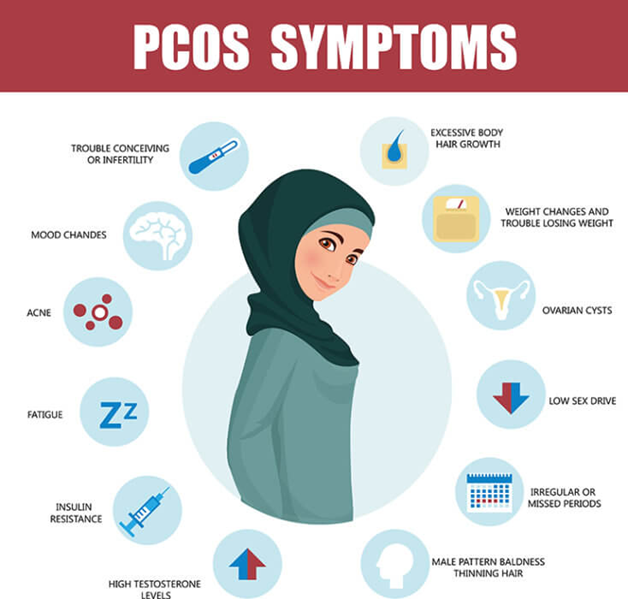
https://www.pib.gov.in/PressReleasePage.aspx?PRID=1893279
Mission LiFE - Edukemy Current Affairs
Why in news? Mission LiFE Pavilion to be set up at Bharat Parv event to encourage people to become Pro Planet.
About:
- Prime Minister launched Mission LiFE in October 2022, with the message that Mission LiFE makes the fight against climate change democratic.
- Mission LiFE is sustainable lifestyle initiative that places small individual actions at the centre of the measures to tackle climate change challenge.
- Mission LiFE is a global initiative by India to help the world lead a sustainable way of life and achieve the sustainable development goals set by the UN.
- The mission functions on the basic principles of ‘Lifestyle of the planet, for the planet and by the planet’.
- The LiFE actions enshrined in Mission LiFE are showcased through various interactive media platforms such as LED screen, Motion Sensor wall, Interactive wall, Live AR wall etc.

https://www.pib.gov.in/PressReleasePage.aspx?PRID=1893416
TRANS FAT: THE SILENT KILLER - Edukemy Current Affairs
In News
A new report by the World Health Organisation (WHO) brings to light the fact that 5 billion people globally are exposed to harmful trans fat, increasing their heart disease and death risk.
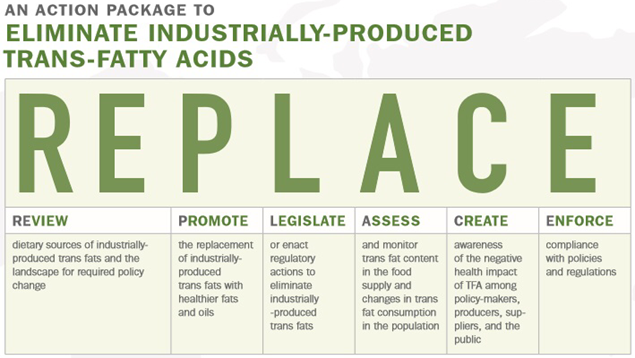
About the News
Since WHO first called for the global elimination of industrially produced trans fat in 2018 – ‘REPLACE Trans Fat by 2023’ – population coverage of best-practice policies has increased almost six-fold.
- The two best-practice policy options prescribed by WHO are-
- Mandatory national limit of 2 grams of industrially produced trans fat per 100 grams of total fat in all foods;
- Mandatory national ban on the production or use of partially hydrogenated oils (a major source of trans fat) as an ingredient in all foods.
- Not only have these regulations been implemented in higher-income countries, but also in many middle income countries like Argentina, Bangladesh, India, Paraguay, the Philippines, and Ukraine.
- However, despite substantial progress, there are still 5 billion worldwide at risk from trans fat’s devastating health impacts with the global goal for its total elimination in 2023 remaining unattainable at this time.
- 9 countries – Australia, Azerbaijan, Bhutan, Ecuador, Egypt, Iran, Nepal, Pakistan, and the Republic of Korea – of the 16 nations with the highest estimated percentage of coronary heart disease fatalities attributed to trans fat consumption, do not have a best-practices strategy.
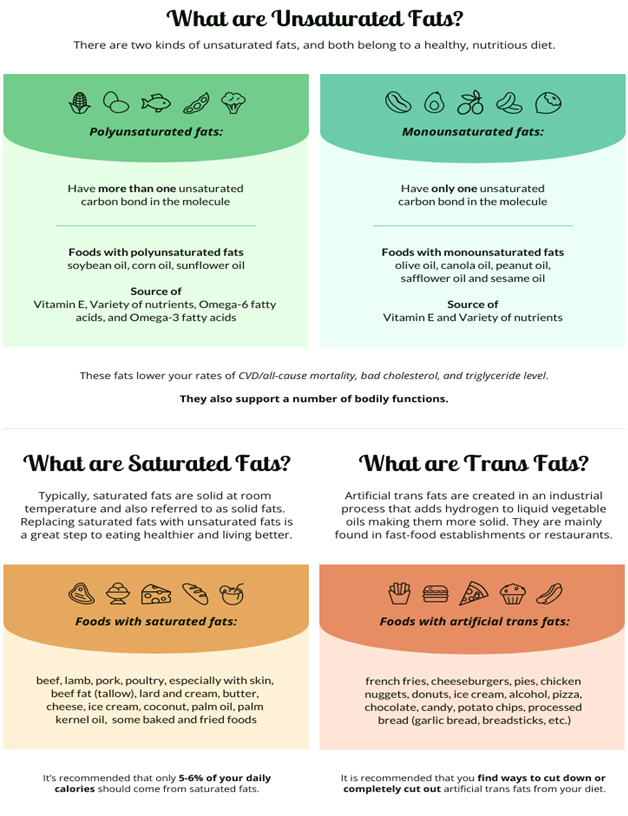
What are Industrially-produced Trans fats?
- Industrially-produced trans-fats or artificial trans-fats are created in an industrial process that adds hydrogen to liquid vegetable oils making them more solid.
- They are mainly found in fast-food establishments or restaurants like French fries, cheeseburgers, etc.
Why is there a concern regarding Trans fats?
- Trans-fats have no known benefits.
- Trans-fats, in fact, create two-fold matters of concern as it raises the level of bad LDL cholesterol and reduces the level of good HDL-cholesterol.
- Trans-fats clog arteries and increase the risk of coronary heart disease.
- Its intake is accountable for up to 500,000 early deaths from coronary heart disease.
- Trans fat is responsible for more than half a million deaths around the world every year from heart disease.
What is India doing to eliminate Trans fats?
Recognizing the health hazards associated with the consumption of industrial trans-fats, FSSAI came up with two-pronged strategies to achieve its goal of ‘Freedom from Trans Fat @75.’
- On the supply side, FSSAI has notified several regulations to regulate trans-fat in industrial products, encouraging the edible oil industry and food business operators to eliminate trans-fat from their products.
- It capped the amount of Trans-fatty acids in oils and fats to 3% by 2021 and 2% by 2022.
- On the demand side, FSSAI has launched a mass media campaign ‘Heart Attack Rewind’- a 30-second Public Service Announcement (PSA) with the aim to create awareness about the harmful effects of trans fat by,
- Reducing acceptability of industrially produced (IP) trans fat in foods
- Building public support for government action to eliminate IP trans fat and
- Leading consumers to the FSSAI website to seek information about trans-fat
https://www.downtoearth.org.in/news/food/5-billion-people-globally-exposed-to-toxic-trans-fat-linked-to-heart-disease-who-87276
PLAGUED HEALTHCARE IN INDIA - Edukemy Current Affairs
In News
As per the Ministry of Health and Family Welfare’s Rural Health Statistics 2021-2022, India’s rural healthcare system continues to be plagued by shortfall on two critical fronts – doctors and infrastructure.
About the structure of healthcare system in India:
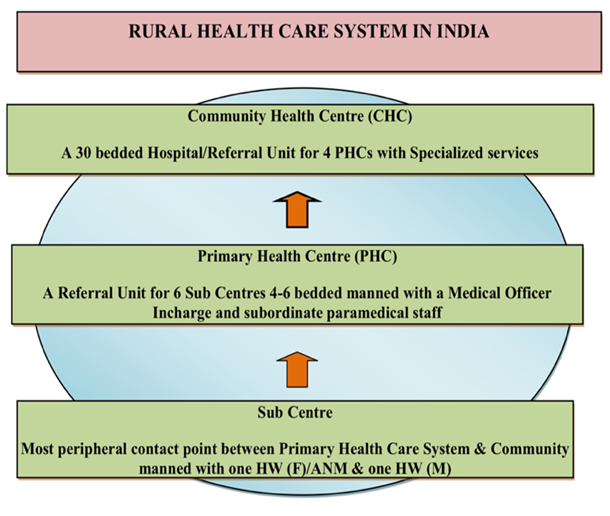
- Rural healthcare system
- Sub-centres (SCs): These are the first point of contact for a patient, catering to a population of 3000-5000 each.
- Primary Health Centres (PHCs): SCs are succeeded by PHCs, which are required to look after the daily needs of 20,000-30,000 people each.
- Community Health Centres (CHCs): CHCs provide referrals and access to specialists, catering to 80,000-1,20,000 people.
- Urban healthcare system: National Urban Health Mission (NUHM) is designed to provide health services at the facility and community level.
- Community level: Outreach services are provided by ANMs, MOs and specialists (for specialist outreach), home visits by ASHAs and ANMs.
- Urban Primary Health Centre (UPHC): These provide comprehensive primary healthcare services preventive, promotive, curative, rehabilitative and palliative care. Under ‘Ayushman Bharat-HWCs’, states are upgrading PHCs to Health and Wellness Centres (HWCs) across rural and urban areas. UPHCs cater 50,000-75,000 people.
- Urban Community Health Centres (UCHCs): It is a referral facility for every 4-5 UPHCs and caters to a population of 2.5-5 Lakhs.
What is the reason for the plagued healthcare system in India?
According to the report by the Health Ministry,
- Rural healthcare systems are stressed due to
- Doctors’ Shortage of –
- 2% of surgeons,
- 2% of obstetricians and gynaecologists,
- 1% physicians,
- 6% of paediatricians
- Overburdened infrastructure –
- Sub-centres (SCs) currently looking after more than 5000 people
- Primary Health Care Centres (PHCs) catering to 36,049 people
- Community Health Centres (CHCs) catering to 1,64,027 people
- These factors plague access to adequate and quality healthcare.
- Less than half the PHCs, 45.1% to be exact, function on a 24x7 basis.
- Of the functioning CHCs, only 541 have all four specialists – surgeon, physician, gynaecologist, and Paediatrician.
- Another important observation in the report is that SCs, PHCs, and CHCs had more staff in 2021, at the height of the second wave of COVID-19, as compared to 2022.
- The number of auxiliary nurse midwives at SCs has decreased to 207,587 in 2021 from 214,820 in 2022.
- The number of doctors at PHCs has shrunk to 30,640 in 2022 from 31,716 in 2021.
- However, Lab technicians, nursing staff and radiographers at PHCs and CHCs have all recorded a marginal increase between 2021 and 2022.
- Doctors’ Shortage of –
- Urban healthcare systems is stressed due to
- Urban PHCs facing severe shortages of
- 8% of doctors,
- 8% of pharmacists,
- 8% of lab technicians, and
- 1% of staff nurses.
- Urban CHCs encountering a shortfall of
- 9% of total specialists,
- 7% of General Duty Medical Officers
- 3% of radiographers,
- 9% of pharmacists,
- 2% of lab technicians, and
- 3% of staff nurses.
- Urban PHCs facing severe shortages of
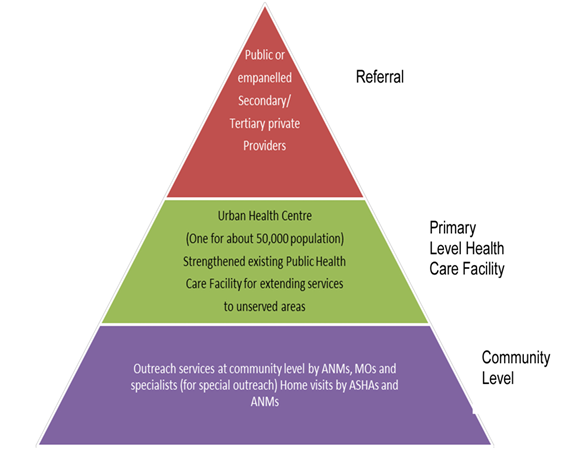
Overall, despite there being a decline in the past year, a huge improvement has been recorded as compared to 2005, when the government launched the National Rural Health Mission.
- The number of allopathic doctors at PHCs have increased from 20,308 in 2005 to 30,640 in 2022, which is about 50.9% increase.
- The specialist doctors at CHCs have increased from 3550 in 2005 to 4485 in 2022.
Source: https://www.downtoearth.org.in/news/health/poor-infrastructure-staff-crunch-continue-to-plague-healthcare-in-rural-india-centre-87250#:~:text=Odisha%20and%20Uttarakhand.-,The%20number%20of%20doctors%20at%20PHCs%20has%20shrunk%20to%2030%2C640,from%202%2C418%20to%202%2C448%2C%20respectively.
Autonomy at Panchayati level - Edukemy Current Affairs
In News: Suicide by sarpanch in Telangana raises crucial lacunae in Panchayat system
About the News:
- Recently, a Sarpanch in Telangana commits suicide due to indebtedness caused by State government’s inordinate delay in releasing bill payments.
- In Telangana, less than a quarter of a panchayat’s revenue comes from its own sources of revenue which often forces sarpanches to use private funds for panchayat activities to fulfil mandated targets and avoid public pressure.
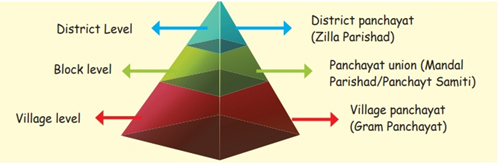
Major issues:
- Ineffective legislation: The 73rd and 74th Amendment Acts, which gave constitutional status to local governments, have not led to significant decentralization of power to panchayats.
- Lack of autonomy at the panchayat level: Local elected officials at the panchayat level in India have limited autonomy due to State governments and local bureaucrats curtailing their powers thereby diluting the spirit of the constitutional amendments aimed at local empowerment.
- Failure of timely payments: Sarpanchs often alleged that the failure of the State government to release funds in time has forced them to utilize either private resources or borrow large amounts to complete panchayat activities and meet various targets.
- Cascading effect: In almost all States, there is a system of double authorization for spending panchayat funds which delay timely payments and increases cthe ost of projects.
- The issue of funding: Gram panchayats remain fiscally dependent on grants (both discretionary and non-discretionary grants) from the State and the Centre for everyday activities.
- Political lineage: Access to discretionary grants for panchayats is often contingent on political and bureaucratic connections.
- Poor recognition: An inordinate delay in transferring approved funds to panchayat accounts stalls local development.
- Executive imposition: State governments often impose spending limits on various expenditures through panchayat funds which often hampers development projects.
- The taxing process of seeking approvals: State governments also bind local governments through the local bureaucracy which makes it a tedious process for sarpanches and limits their power.
- The shadow of bureaucrats: Unlike elected officials at other levels, there are regular instances of bureaucrats deciding to dismiss sarpanches from office. For example, in Telangana, more than 100 sarpanches have been dismissed from office in recent years.
|
Who is Sarpanch? |
Eligibility and qualifications to become a sarpanch:
|
Source:
https://www.thehindu.com/opinion/lead/there-is-hardly-any-autonomy-at-the-panchayat-level/article66414499.ece
MOEFCC notify NORMS FOR FLY ASH UTILISATION BY POWER PLANTs
In News: Union Ministry of Environment, Forest and Climate Change (MoEFCC) notifies amendments to the Environment (Protection) Act to regulate use of fly ash.
- The notification has been done for better monitoring and utilization of fly ash by coal-based thermal power plants (TPPs) in the country.
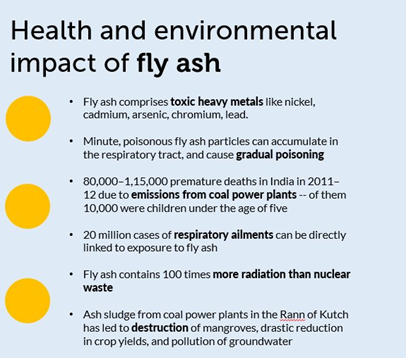
- It requires all coal and lignite-based TPPs to make ready mix concrete, bricks, and other goods for the building industry using 100% fly ash in an environmentally sustainable manner.
- For the first-time government may apply a fine of $1000 per tonne of fly ash if the facilities fail to meet these standards.
- TPPs must complete 100% fly ash use in three years rather than the previous five and the TPPs' utilisation rates shouldn't go below 80%.
- Government to create a committee headed by the Chairman of Central Pollution Control Board (CPCB) with members from the ministries of Power, Coal, Mines, Environment, Road Transportation and Highways and Heavy Industries to monitor fly ash utilization.
- Auditors approved by CPCB will perform compliance audits for ash disposal by the TPPs and their user agencies.
- The audit report will be submitted to CPCB and the concerned state pollution control board (SPCB) by November 30 every year and action against non-compliant TPPs will be taken within 15 days of receiving the report.
Pan transcriptome - Edukemy Current Affairs
News: Researchers at the University of California propose a "pan transcriptome" in a paper published in the journal Nature Methods.
|
A transcriptome is the complete set of RNA molecules in a cell or tissue including mRNA, rRNA, tRNA, and other non-coding RNA, that are produced by the genetic material of an organism. |
- Pan-transcriptome is a reference that contains genetic material from a cohort of diverse individuals, rather than just a single linear strand. It combines a transcriptome and a pangenome, which is a reference that contains genetic material from a cohort of diverse individuals, rather than just a single linear strand.
- The pan transcriptome concept builds on the emerging concept of "pan genomics" in the genomics field.
- Typically, when evaluating an individual's genomic data for variation, scientists compare the individual's genome to that of a reference made up of a single, linear strand of DNA bases.
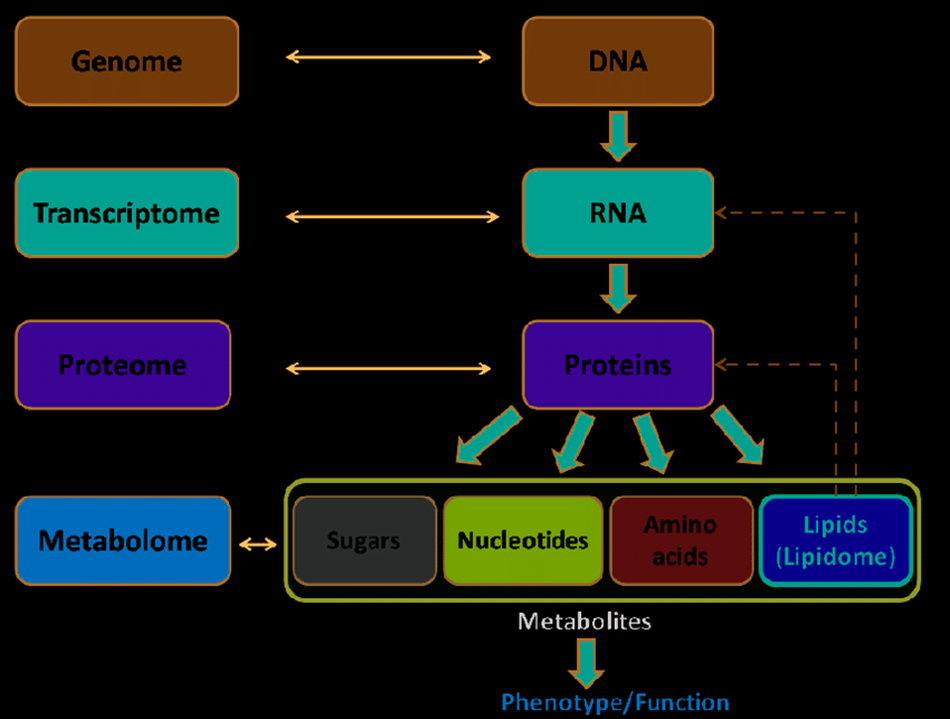
https://www.thehindu.com/sci-tech/science/what-is-a-pantranscriptome/article66395987.ece
Share the article
Get Latest Updates on Offers, Event dates, and free Mentorship sessions.

Get in touch with our Expert Academic Counsellors 👋
FAQs
UPSC Daily Current Affairs focuses on learning current events on a daily basis. An aspirant needs to study regular and updated information about current events, news, and relevant topics that are important for UPSC aspirants. It covers national and international affairs, government policies, socio-economic issues, science and technology advancements, and more.
UPSC Daily Current Affairs provides aspirants with a concise and comprehensive overview of the latest happenings and developments across various fields. It helps aspirants stay updated with current affairs and provides them with valuable insights and analysis, which are essential for answering questions in the UPSC examinations. It enhances their knowledge, analytical skills, and ability to connect current affairs with the UPSC syllabus.
UPSC Daily Current Affairs covers a wide range of topics, including politics, economics, science and technology, environment, social issues, governance, international relations, and more. It offers news summaries, in-depth analyses, editorials, opinion pieces, and relevant study materials. It also provides practice questions and quizzes to help aspirants test their understanding of current affairs.
Edukemy's UPSC Daily Current Affairs can be accessed through:
- UPSC Daily Current Affairs can be accessed through Current Affairs tab at the top of the Main Page of Edukemy.
- Edukemy Mobile app: The Daily Current Affairs can also be access through Edukemy Mobile App.
- Social media: Follow Edukemy’s official social media accounts or pages that provide UPSC Daily Current Affairs updates, including Facebook, Twitter, or Telegram channels.

